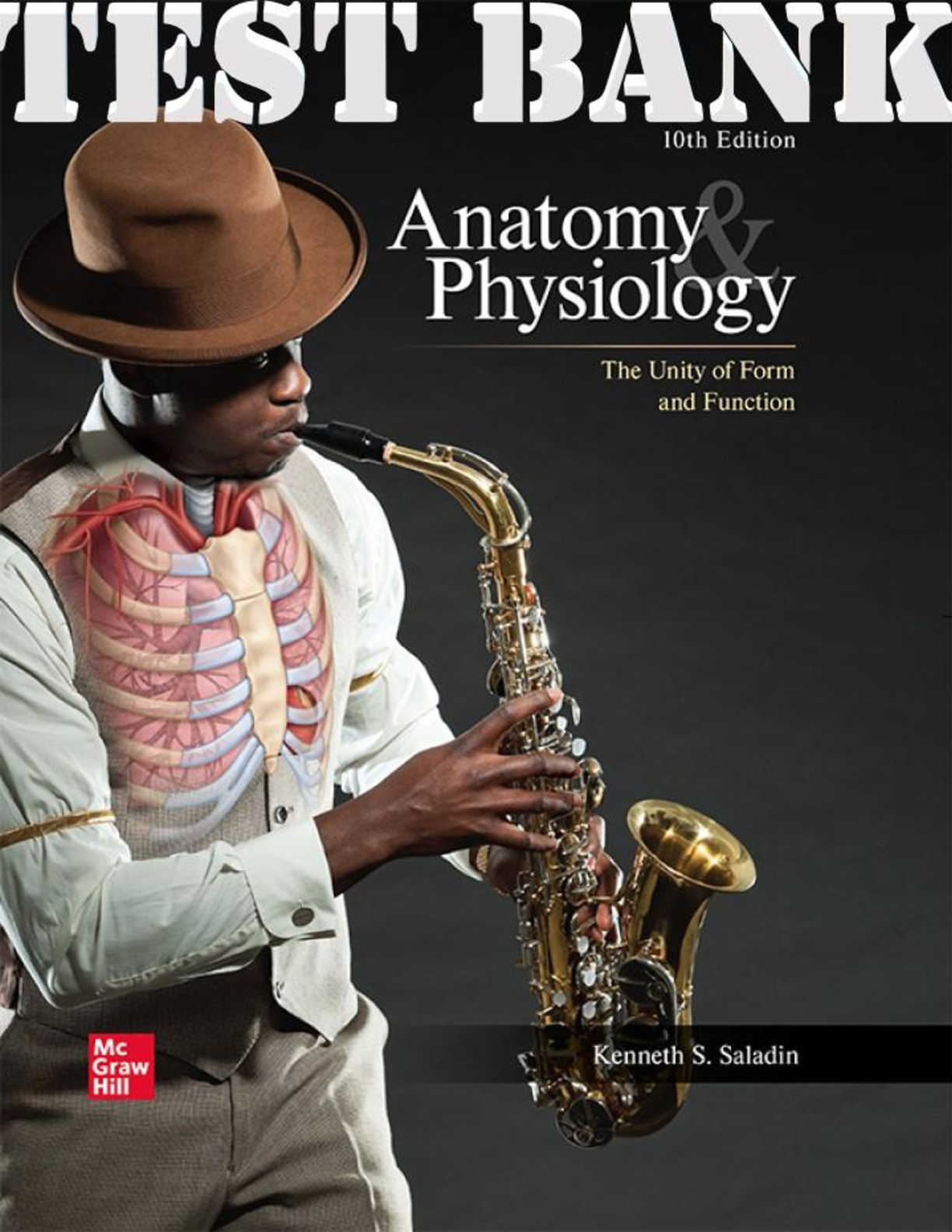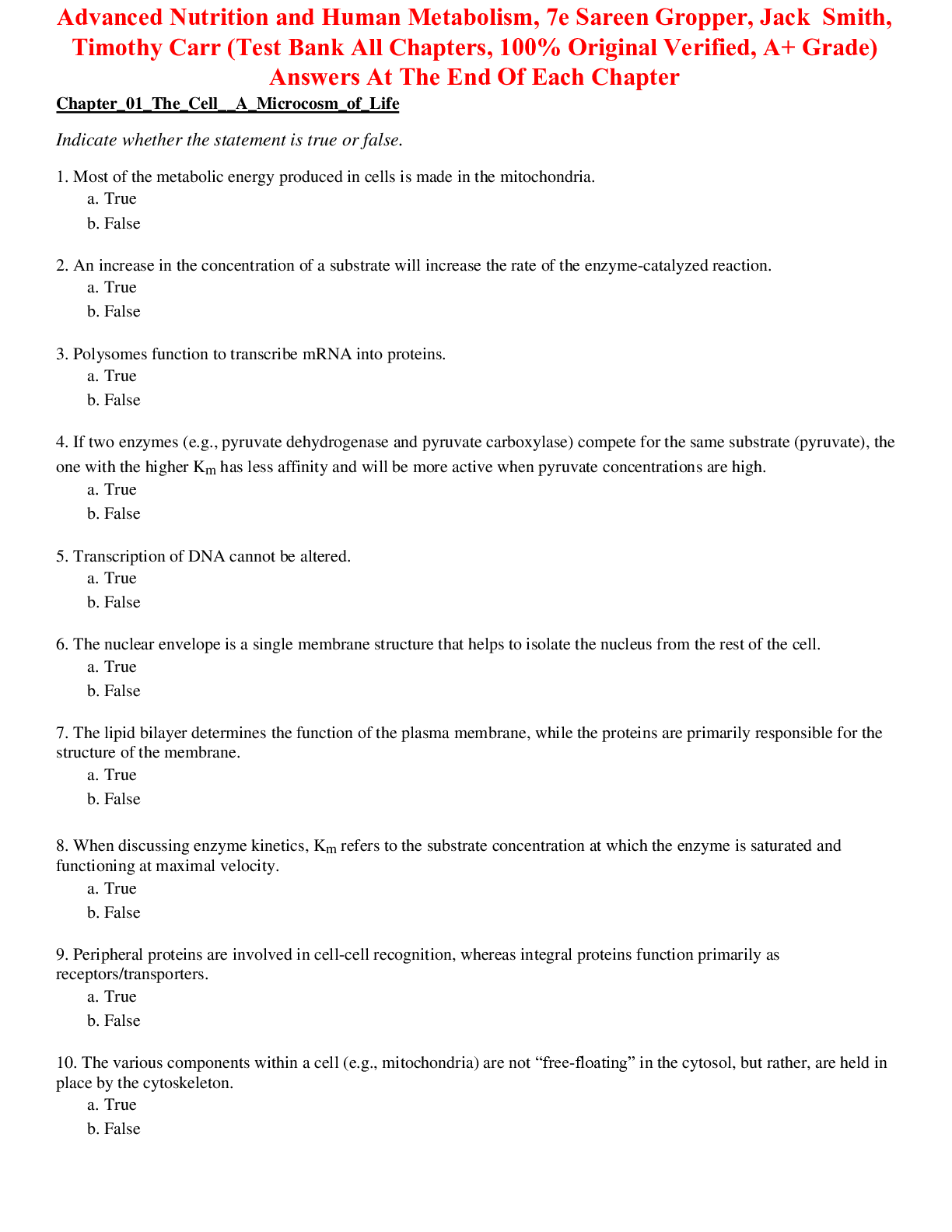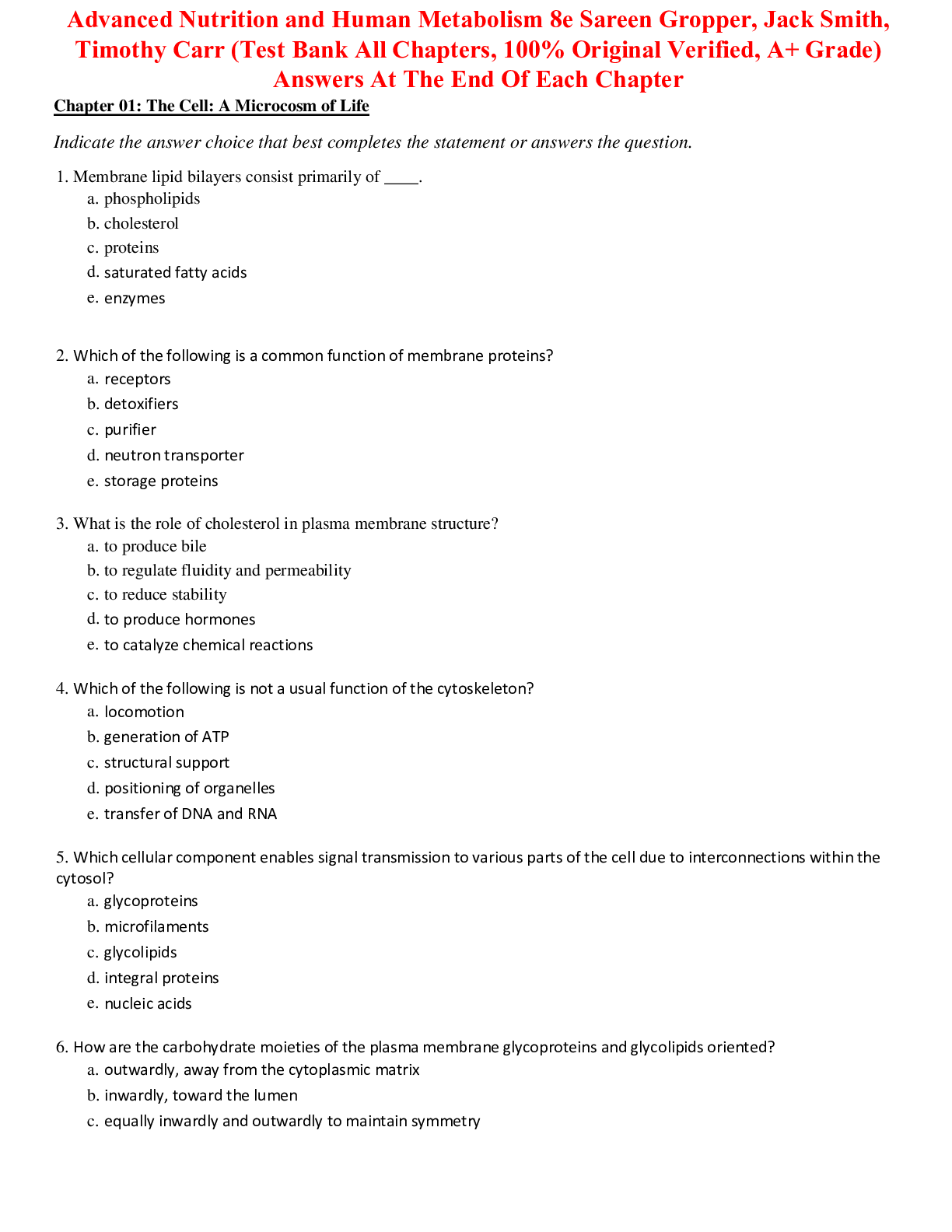*NURSING > TEST BANK > Chapter 4: Beginning the Physical Examination: General Survey, Vital Signs, and Pain (All)
Chapter 4: Beginning the Physical Examination: General Survey, Vital Signs, and Pain
Document Content and Description Below
Bates’ Guide to Physical Examination and History Taking, 12th Edition Chapter 4: Beginning the Physical Examination: General Survey, Vital Signs, and Pain Multiple Choice 1. A 15-year-old high sc... hool sophomore and her mother come to your clinic because the mother is concerned about her daughter's weight. You measure her daughter's height and weight and obtain a BMI of 19.5 kg/m2 . Based on this information, which of the following is appropriate? A) Refer the patient to a nutritionist and a psychologist because the patient is anorexic. B) Reassure the mother that this is a normal body weight. C) Give the patient information about exercise because the patient is obese. D) Give the patient information concerning reduction of fat and cholesterol in her diet because she is obese. Ans: B Chapter: 04 Feedback: The patient has a normal BMI; the range for a normal BMI is 18.5 to 24.9 kg/m2 . You may be able to give the patient and her mother the lower limit of normal in pounds for her daughter's height, or instruct her in how to use a BMI table. 2. A 25-year-old radio announcer comes to the clinic for an annual examination. His BMI is 26.0 kg/m2 . He is concerned about his weight. Based on this information, what is appropriate counsel for the patient during the visit? A) Refer the patient to a nutritionist because he is anorexic. B) Reassure the patient that he has a normal body weight. C) Give the patient information about reduction of fat, cholesterol, and calories because he is overweight. D) Give the patient information about reduction of fat and cholesterol because he is obese. Ans: C Chapter: 04 Feedback: The patient has a BMI in the overweight range, which is 25.0 to 29.9 kg/m2 . It is TEST BANK FOR BATES' GUIDE TO PHYSICAL EXAMINATION AND HISTORY TAKING 12TH EDITION BY BICKLEY NURSINGTB.COM This study source was downloaded by 100000831988016 from CourseHero.com on 05-06-2022 10:18:52 GMT -05:00 https://www.coursehero.com/file/64115452/Bates-TB-Chapter-4-Beginning-the-Physical-Examination-General-Survey-Vital-Signs-and-Painpdf/ N U R S I N G T B . C O M prudent to give him information about reducing calories, fat, and cholesterol in his diet to help prevent further weight gain. 3. A 30-year-old sales clerk comes to your office wanting to lose weight; her BMI is 30.0 kg/m2 . What is the most appropriate amount for a weekly weight reduction goal? A) .5 to 1 pound per week B) 1 to 2.5 pounds per week C) 2.5 to 3.5 pounds per week D) 3.5 to 4.5 pounds per week Ans: A Chapter: 04 Feedback: Based on the NIH Obesity Guidelines, this is the weekly weight loss goal to strive for to maintain long-term control of weight. More rapid weight loss than this does not result in a better outcome at one year. 4. A 67-year-old retired janitor comes to the clinic with his wife. She brought him in because she is concerned about his weight loss. He has a history of smoking 3 packs of cigarettes a day for 30 years, for a total of 90 pack-years. He has noticed a daily cough for the past several years, which he states is productive of sputum. He came into the clinic approximately 1 year ago, and at that time his weight was 140 pounds. Today, his weight is 110 pounds. Which one of the following questions would be the most important to ask if you suspect that he has lung cancer? A) Have you tried to force yourself to vomit after eating a meal? B) Do you have heartburn/indigestion and diarrhea? C) Do you have enough food to eat? D) Have you tried to lose weight? Ans: D Chapter: 04 Feedback: This is important: If the patient hasn't tried to lose weight, then this weight loss is inadvertent and poses concern for a neoplastic process, especially given his smoking history. 5. Common or concerning symptoms to inquire about in the General Survey and vital signs include all of the following except: TEST BANK FOR BATES' GUIDE TO PHYSICAL EXAMINATION AND HISTORY TAKING 12TH EDITION BY BICKLEY NURSINGTB.COM This study source was downloaded by 100000831988016 from CourseHero.com on 05-06-2022 10:18:52 GMT -05:00 https://www.coursehero.com/file/64115452/Bates-TB-Chapter-4-Beginning-the-Physical-Examination-General-Survey-Vital-Signs-and-Painpdf/ N U R S I N G T B . C O M A) Changes in weight B) Fatigue and weakness C) Cough D) Fever and chills Ans: C Chapter: 04 Feedback: This symptom is more appropriate to the respiratory review of systems. 6. You are beginning the examination of a patient. All of the following areas are important to observe as part of the General Survey except: A) Level of consciousness B) Signs of distress C) Dress, grooming, and personal hygiene D) Blood pressure Ans: D Chapter: 04 Feedback: Blood pressure is a vital sign, not part of the General Survey. 7. A 55-year-old bookkeeper comes to your office for a routine visit. You note that on a previous visit for treatment of contact dermatitis, her blood pressure was elevated. She does not have prior elevated readings and her family history is negative for hypertension. You measure her blood pressure in your office today. Which of the following factors can result in a false high reading? A) Blood pressure cuff is tightly fitted. B) Patient is seated quietly for 10 minutes prior to measurement. C) Blood pressure is measured on a bare arm. D) Patient's arm is resting, supported by your arm at her mid-chest level as you stand to measure the blood pressure. Ans: A Chapter: 04 Feedback: A blood pressure cuff that is too tightly fitted can result in a false high reading. The other answers are important to observe to obtain an accurate blood pressure reading. JNC-7 also mentions the importance of having the back supported when obtaining blood pressure in the sitting position. TEST BANK FOR BATES' GUIDE TO PHYSICAL EXAMINATION AND HISTORY TAKING 12TH EDITION BY BICKLEY NURSINGTB.COM This study source was downloaded by 100000831988016 from CourseHero.com on 05-06-2022 10:18:52 GMT -05:00 https://www.coursehero.com/file/64115452/Bates-TB-Chapter-4-Beginning-the-Physical-Examination-General-Survey-Vital-Signs-and-Painpdf/ N U R S I N G T B . C O M 8. A 49-year-old truck driver comes to the emergency room for shortness of breath and swelling in his ankles. He is diagnosed with congestive heart failure and admitted to the hospital. You are the student assigned to do the patient's complete history and physical examination. When you palpate the pulse, what do you expect to feel? A) Large amplitude, forceful B) Small amplitude, weak C) Normal D) Bigeminal Ans: B Chapter: 04 Feedback: Congestive heart failure is characterized by decreased stroke volume or increased peripheral vascular resistance, which would result in a small-amplitude, weak pulse. Subtle differences in amplitude are usually best detected in large arteries close to the heart, like the carotid pulse. You may not be able to notice these in other locations. 9. An 18-year-old college freshman presents to the clinic for evaluation of gastroenteritis. You measure the patient's temperature and it is 104 degrees Fahrenheit. What type of pulse would you expect to feel during his initial examination? A) Large amplitude, forceful B) Small amplitude, weak C) Normal D) Bigeminal Ans: A Chapter: 04 Feedback: Fever results in an increased stroke volume, which results in a large-amplitude, forceful pulse. Later in the course of the illness, if dehydration and shock result, you may expect small amplitude and weak pulses. 10. A 25-year-old type 1 diabetic clerk presents to the emergency room with shortness of breath and states that his blood sugar was 605 at home. You diagnose the patient with diabetic ketoacidosis. What is the expected pattern of breathing? A) Normal TEST BANK FOR BATES' GUIDE TO PHYSICAL EXAMINATION AND HISTORY TAKING 12TH EDITION BY BICKLEY NURSINGTB.COM This study source was downloaded by 100000831988016 from CourseHero.com [Show More]
Last updated: 11 months ago
Preview 1 out of 9 pages

Reviews( 0 )
Document information
Connected school, study & course
About the document
Uploaded On
May 06, 2022
Number of pages
9
Written in
Additional information
This document has been written for:
Uploaded
May 06, 2022
Downloads
0
Views
96



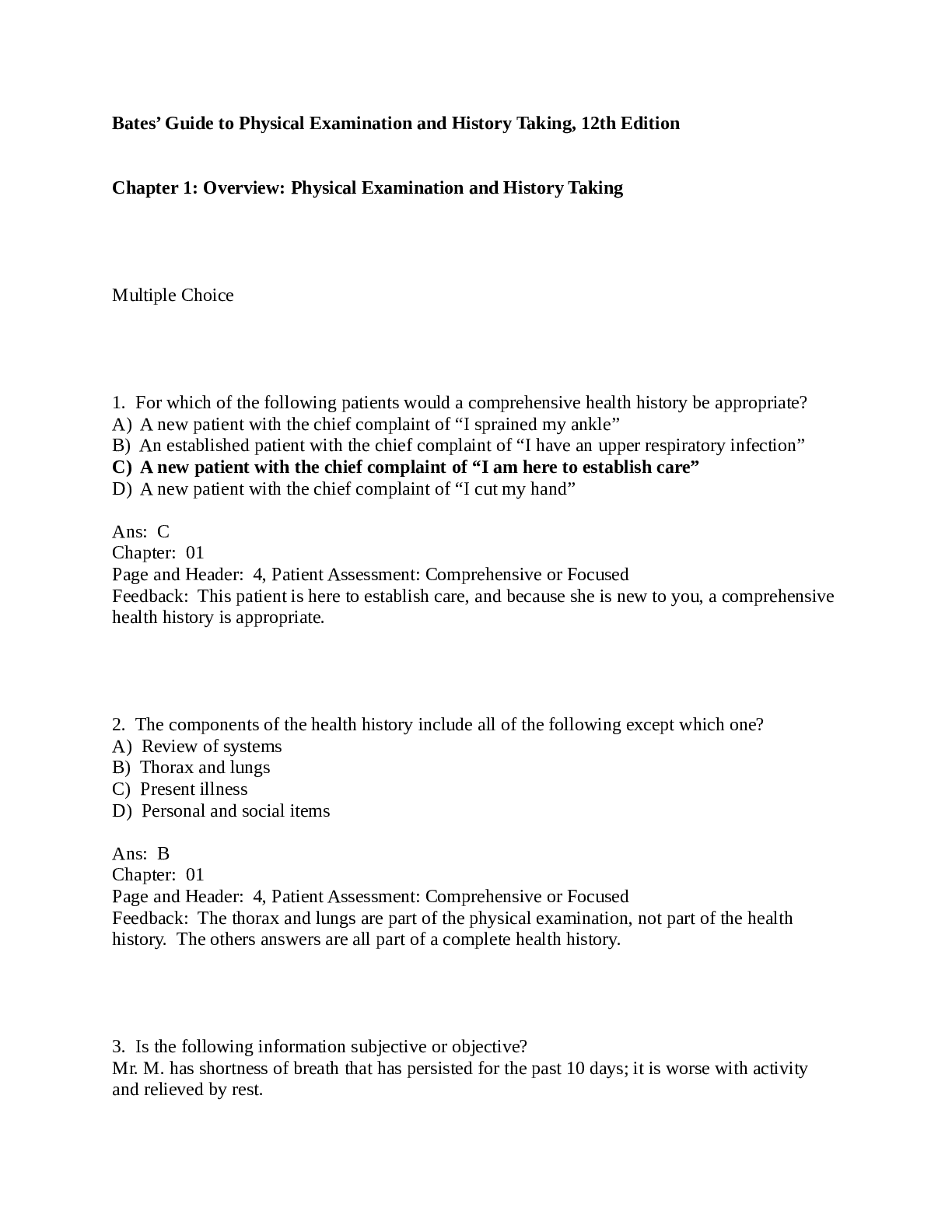
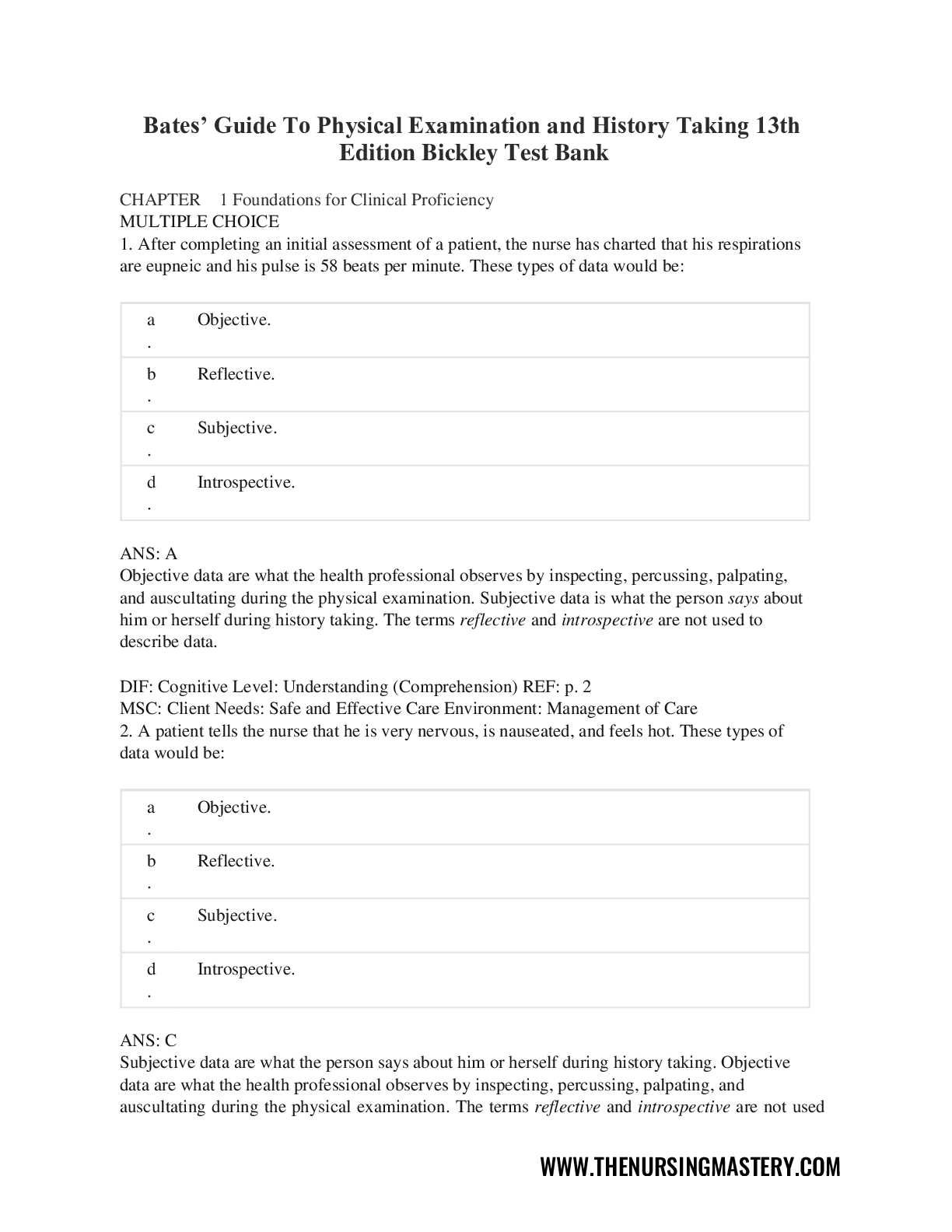
.png)
.png)
.png)

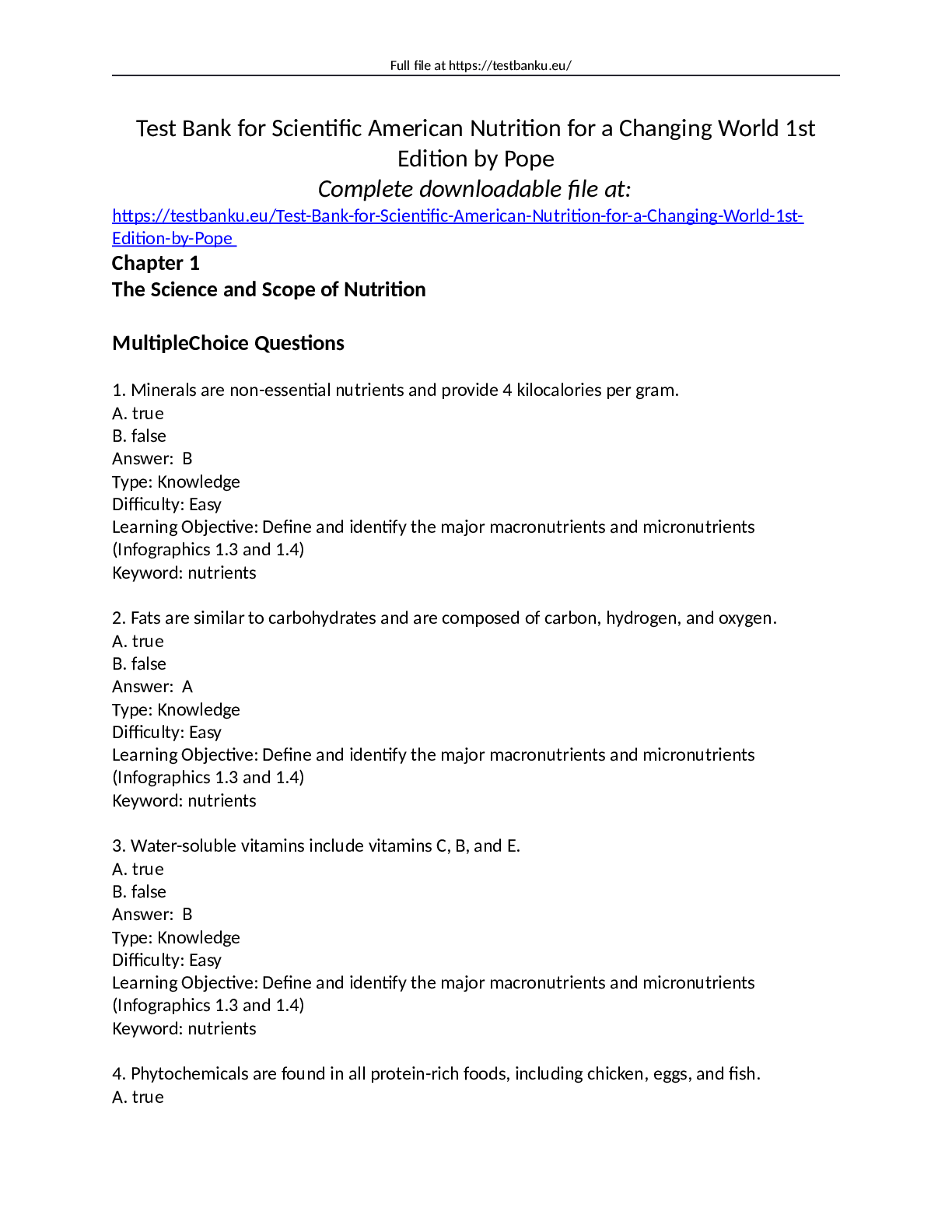
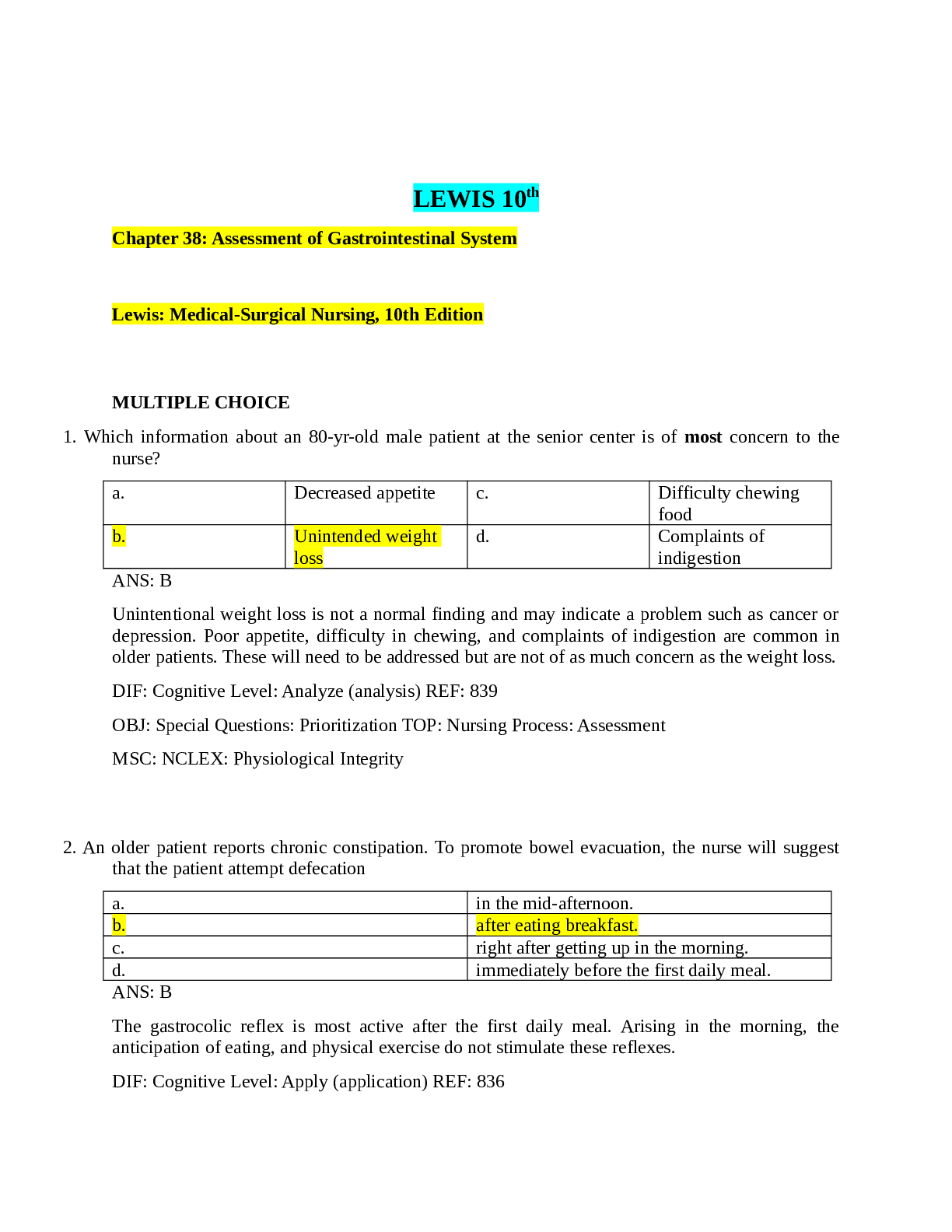

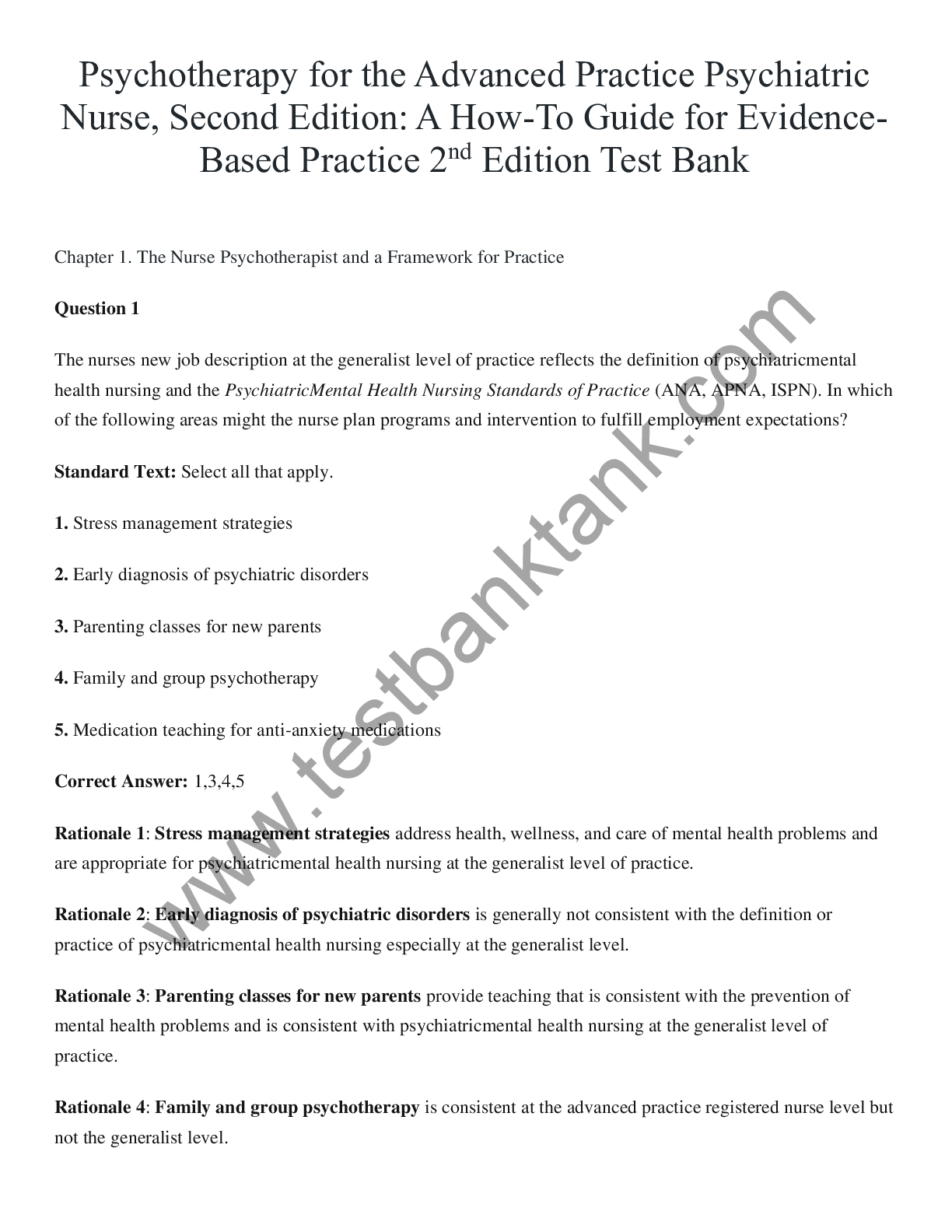
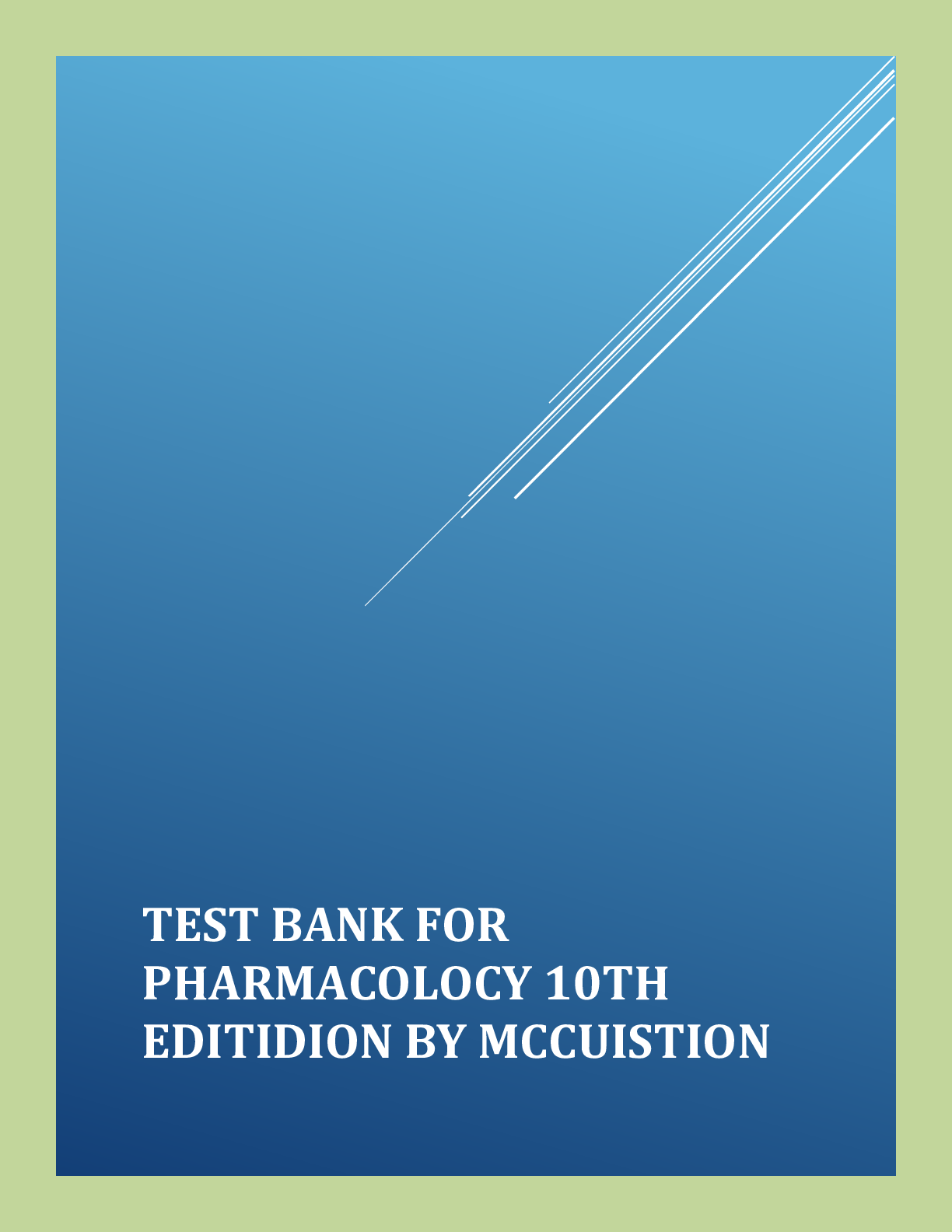
.png)


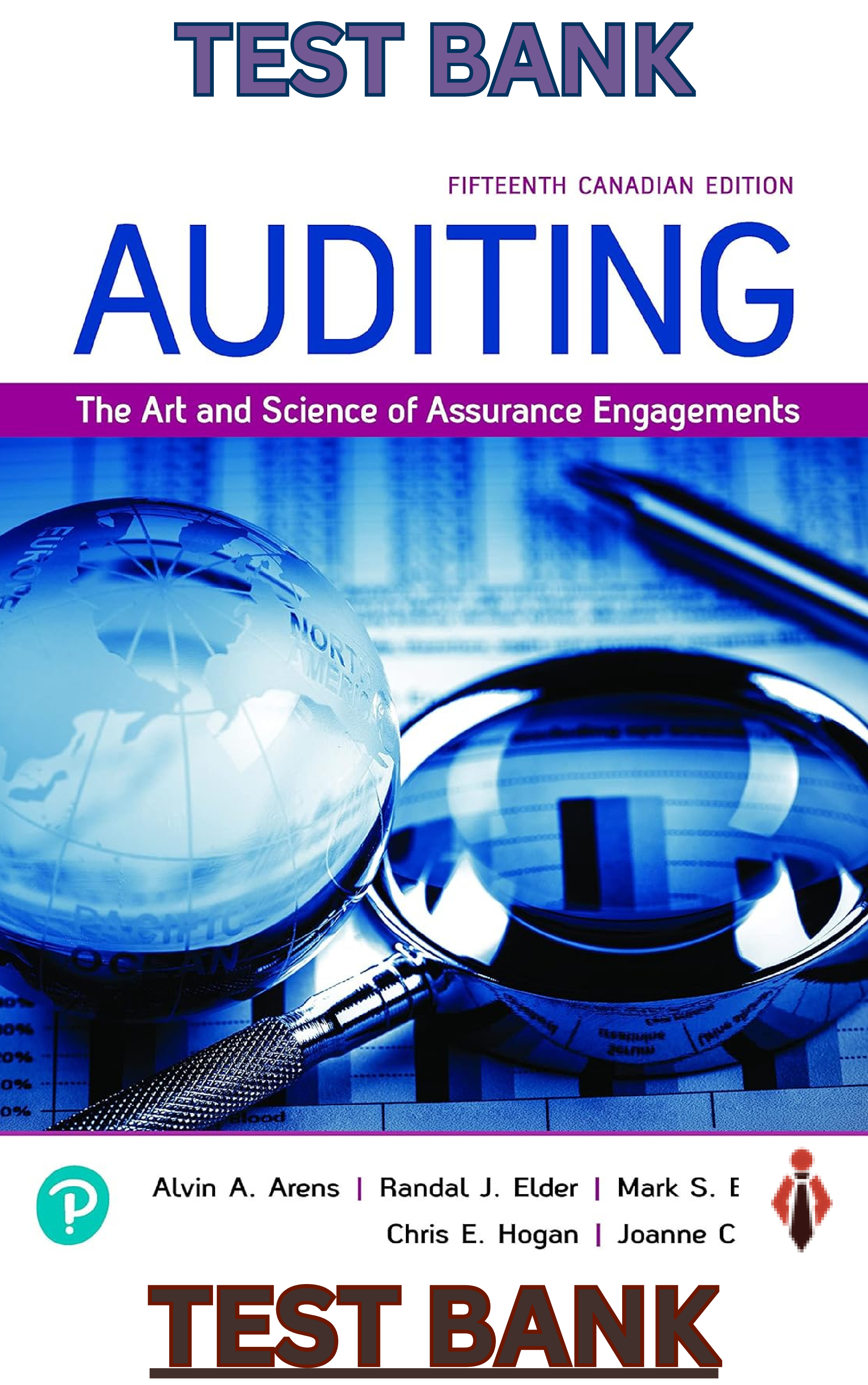

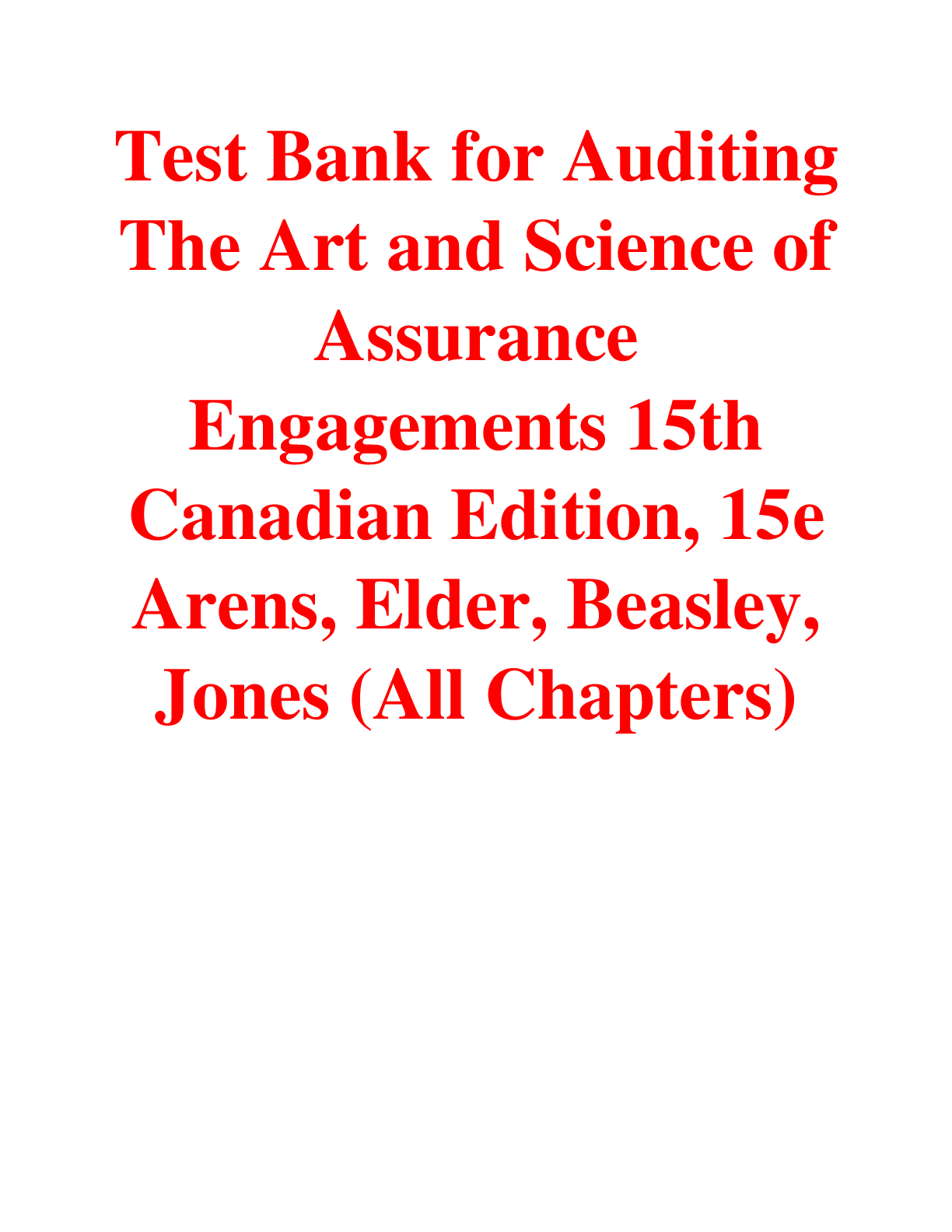
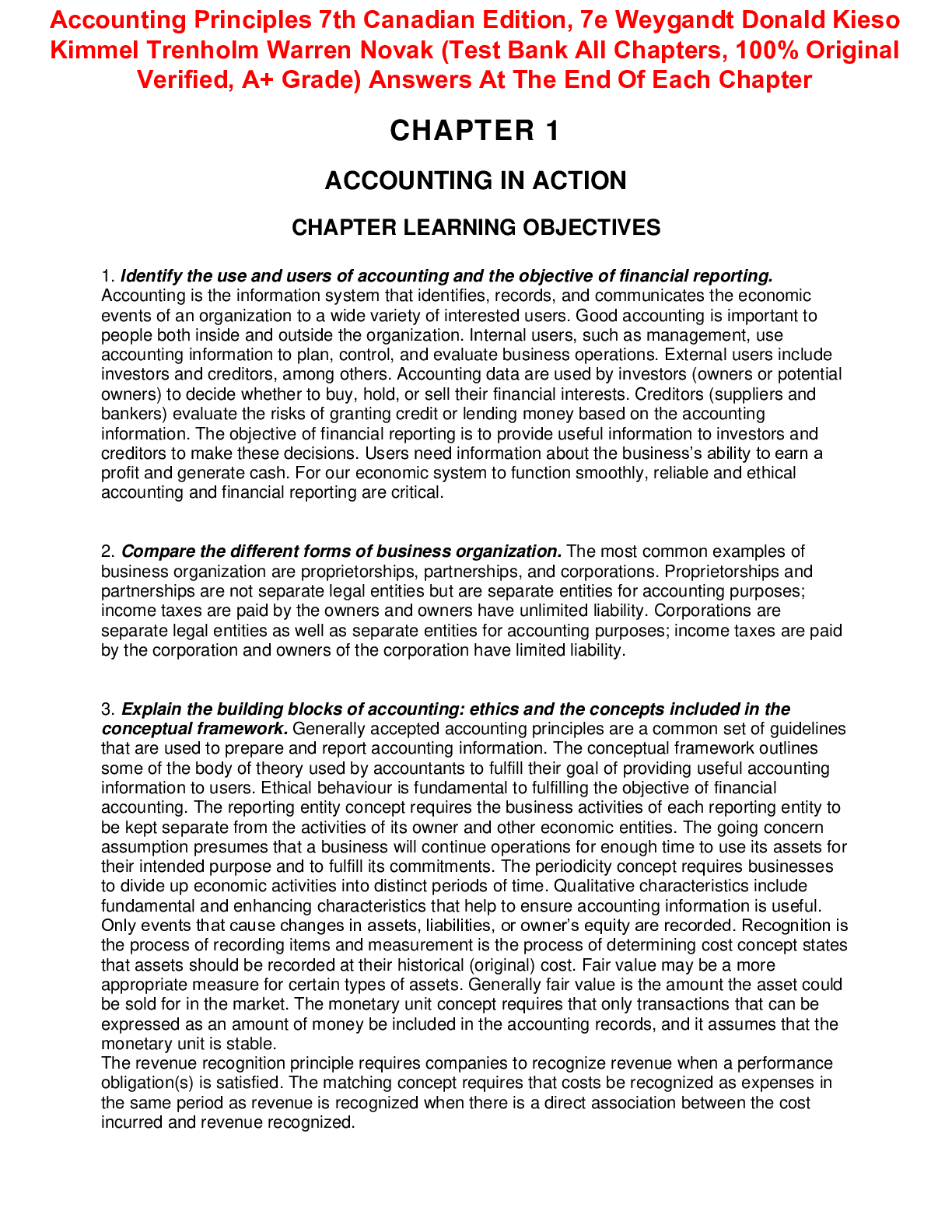
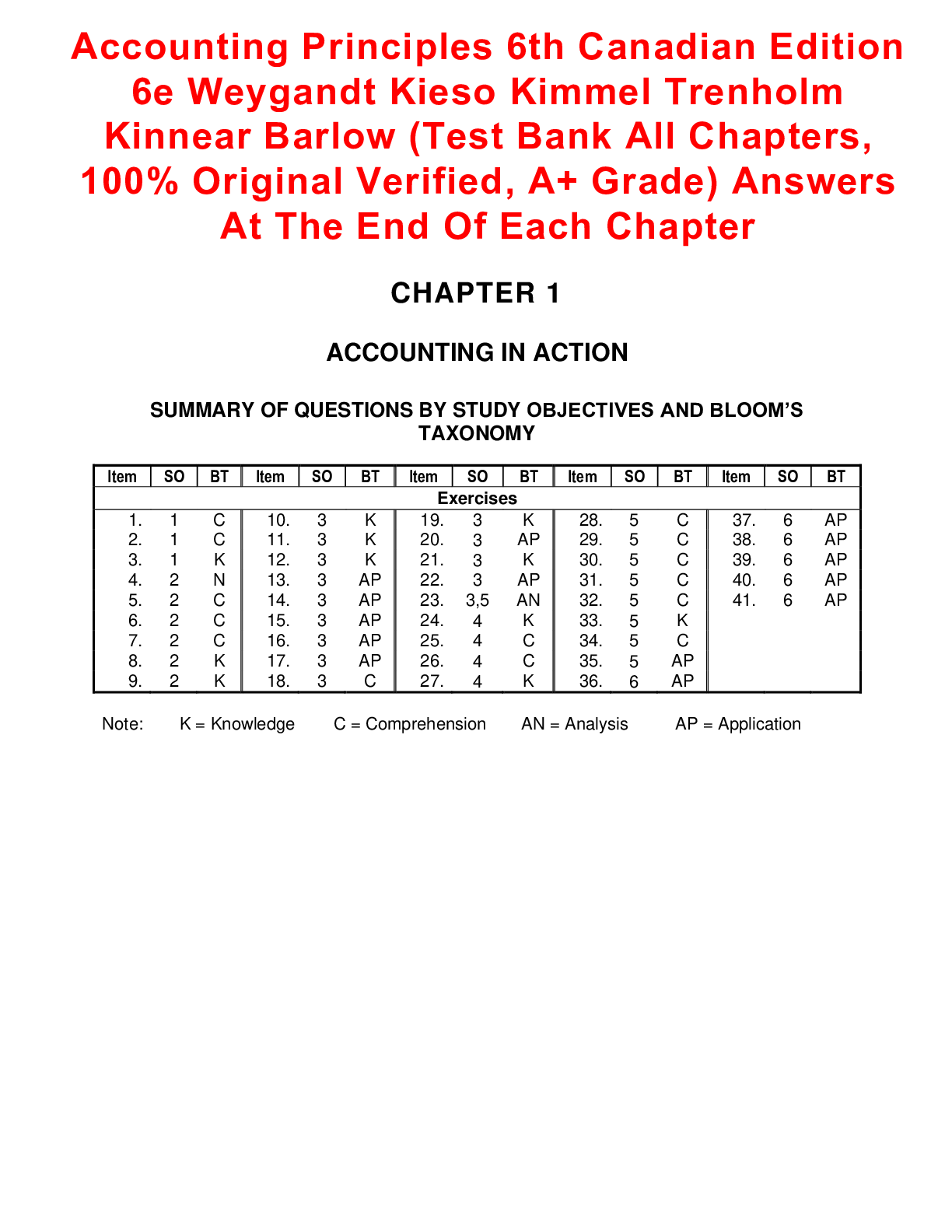
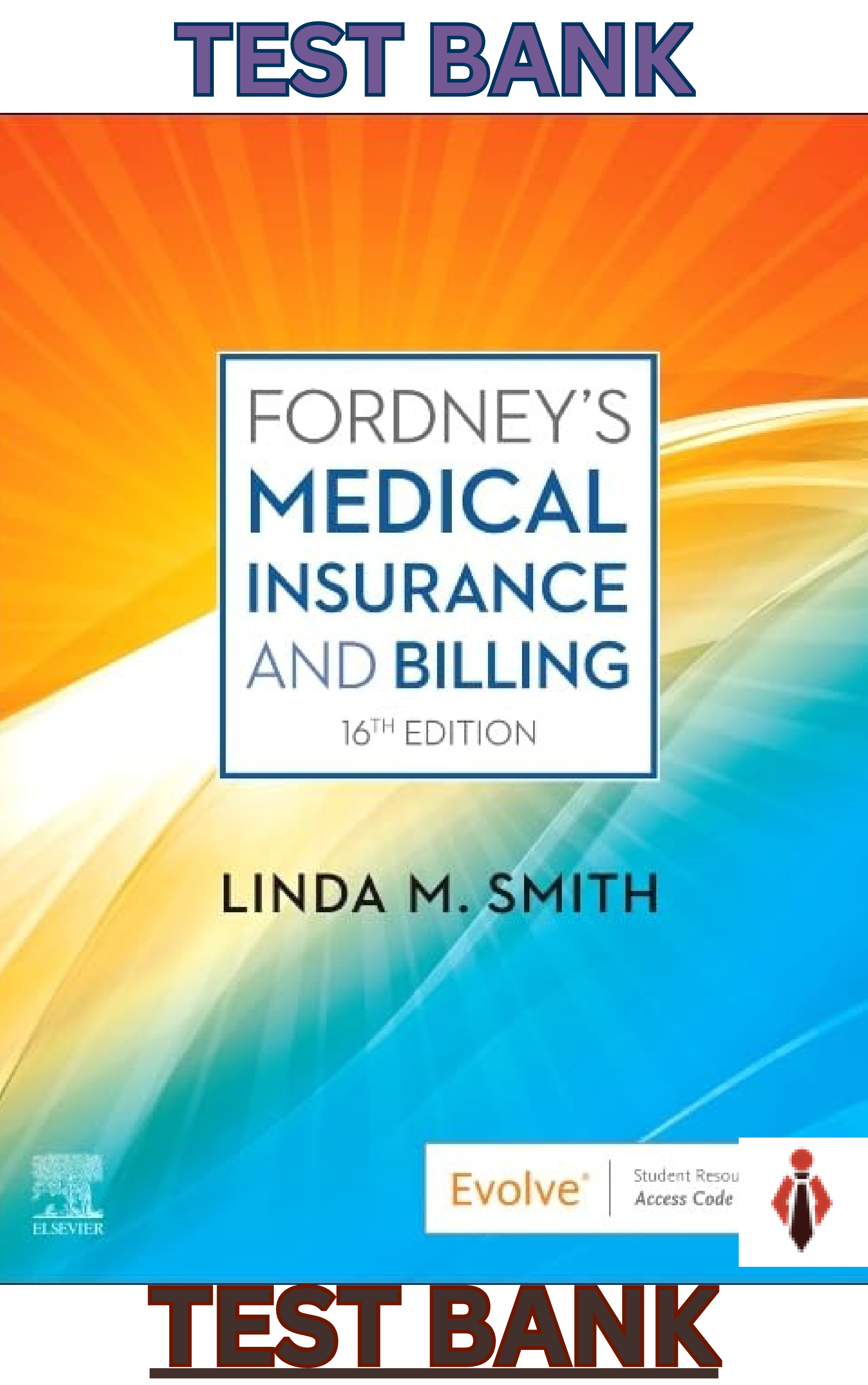

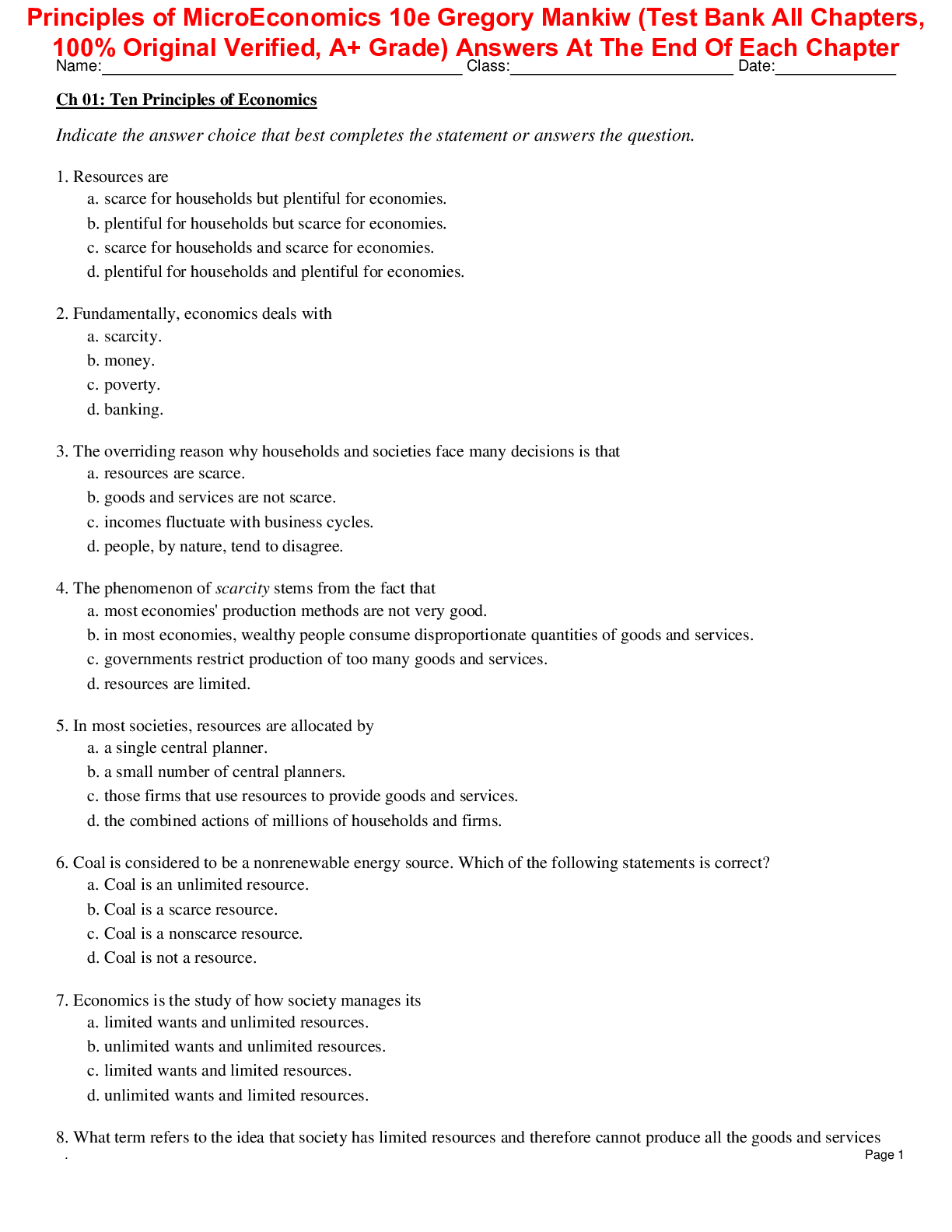

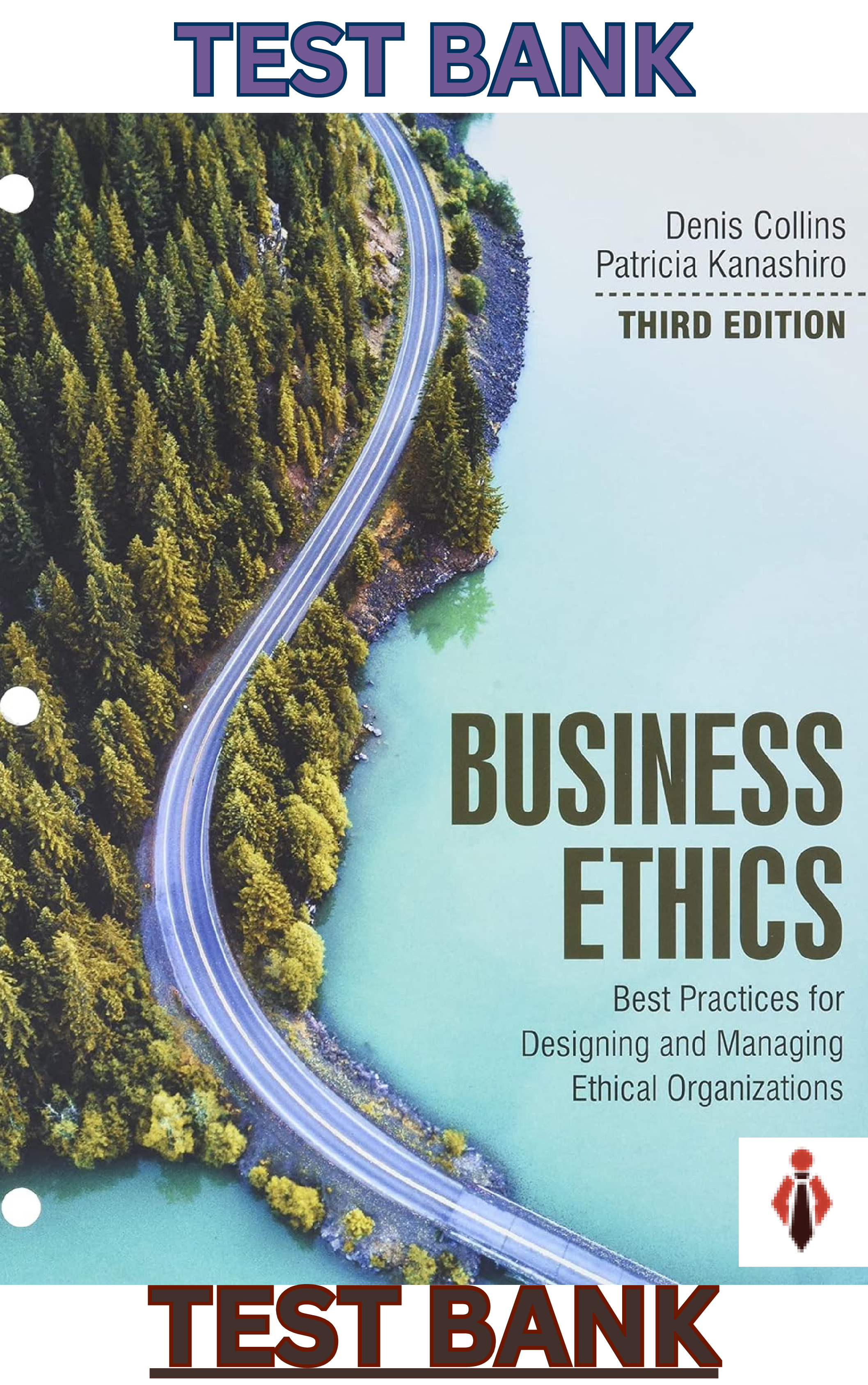
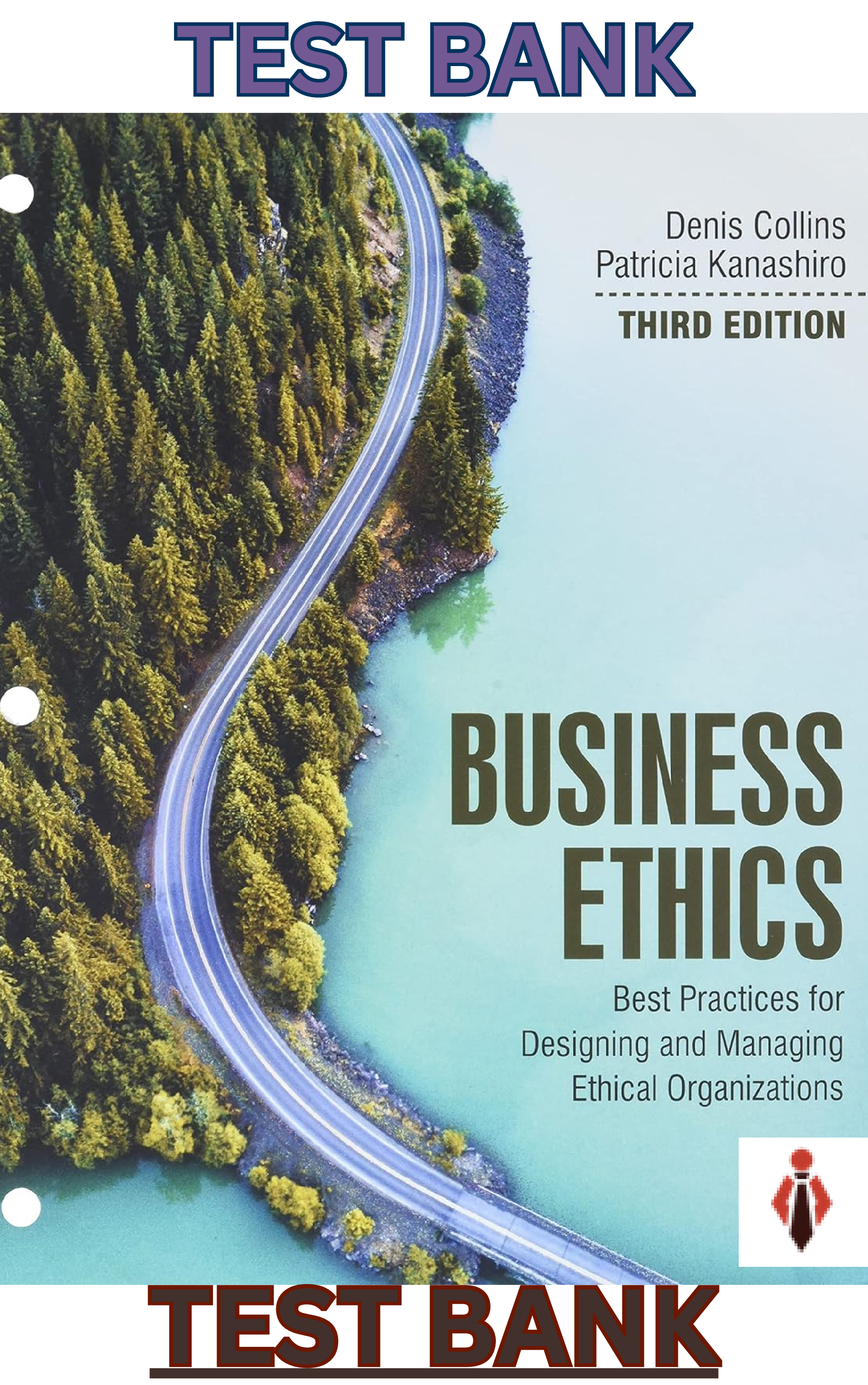
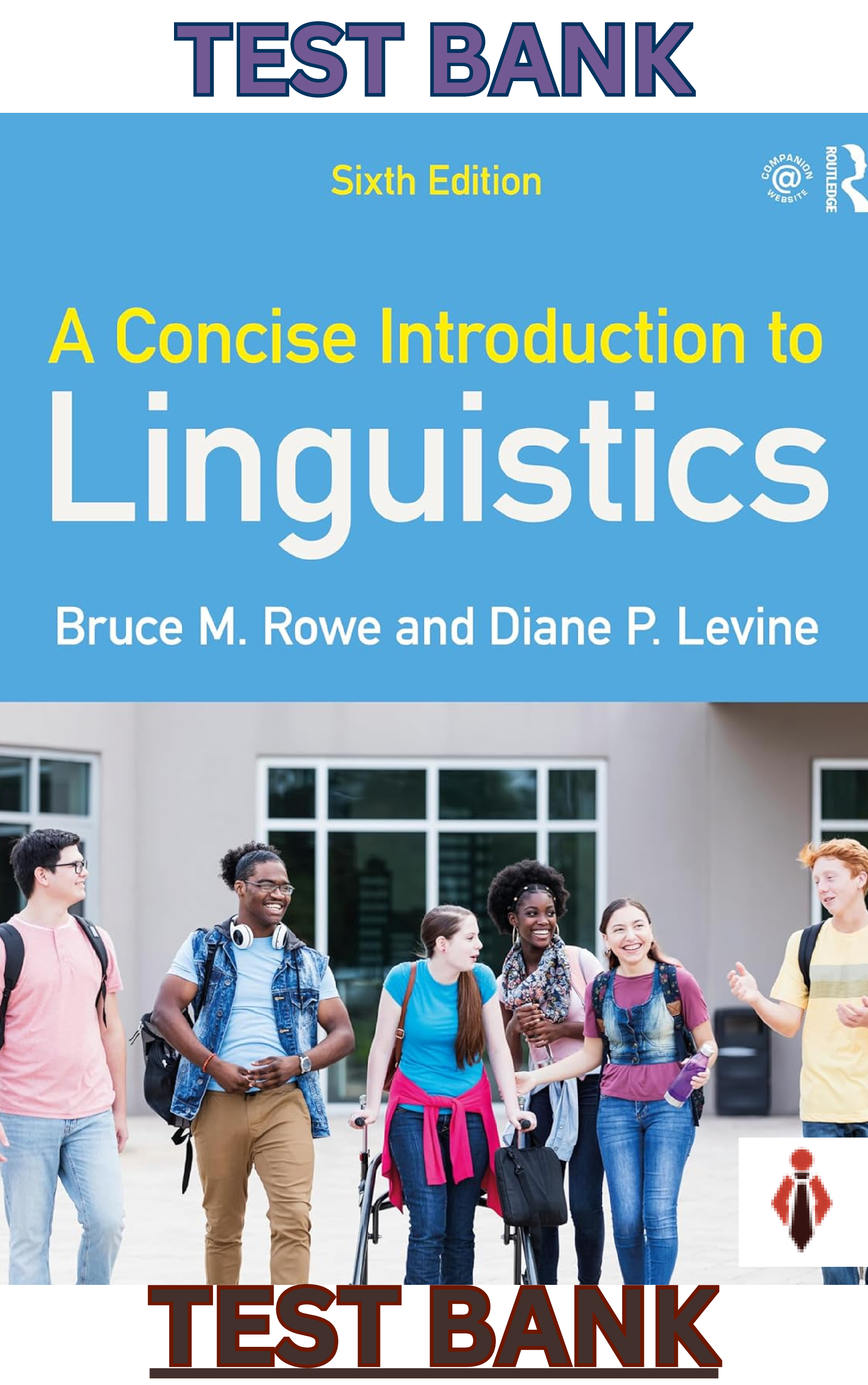

.png)
